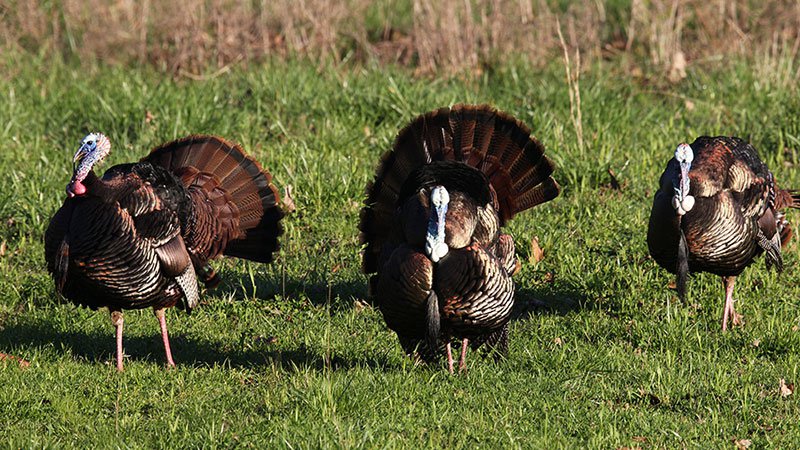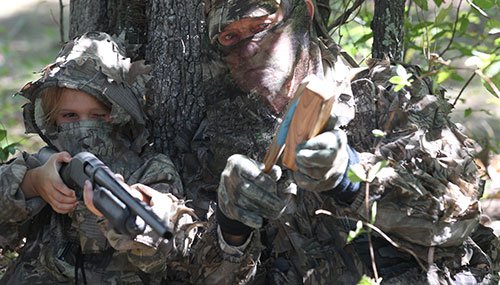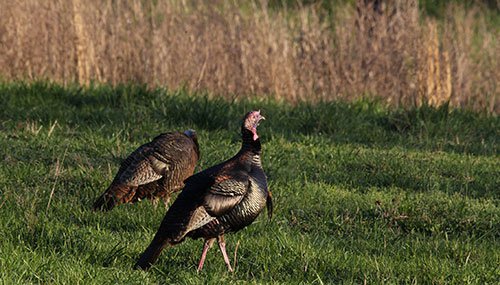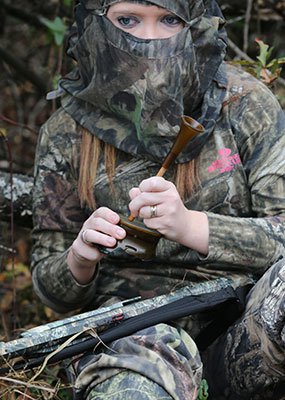Top prospects for turkeys
ON 04-01-2020

April 1, 2020
Randy Zellers
Assistant Chief of Communications

LITTLE ROCK — With turkey season only weeks away, many hunters are already getting antsy to scout some new territory for the season. This year also may be the year many new hunters decide to take to the turkey woods for a healthy alternative to cabin fever. Here are a few top prospects for hunters to scout before the youth turkey hunt April 11-12 and opening day on April 13.
The name of the game when it comes to turkey hunting is space. Putting some distance between you and the next hunter is essential to get your chance at a bird this spring. Setting up too close to another hunter can spook the birds and, even worse, shut down the natural gobbling that will take place. Luckily, Arkansas has nearly 3.2 million acres of publicly accessible land for hunters to spread out and search for a bird of their own.
According to the Arkansas Game and Fish Commission’s 2019 Arkansas Annual Turkey Report, the following wildlife management areas had the highest turkey harvest:
- Ozark National Forest WMA (126,889 acres) — 67 harvested gobblers
- Sylamore WMA (170,000 acres) — 63 harvested gobblers
- Muddy Creek WMA (146,202 acres) — 60 harvested gobblers
- Winona WMA (160,000 acres) — 45 harvested gobblers
- Mount Magazine WMA (120,000 acres) — 39 harvested gobblers
In addition to being some of the AGFC’s largest WMAs, all but one of these areas is open to turkey hunting during the season without a specially drawn permit. Sylamore has a special permit hunt April 13-15, but has an open season without a permit from April 18-28. On the other four areas, a free General Use WMA Permit and valid hunting license are all that’s needed to hunt during the entire turkey season.
“We have smaller WMAs where hunters have decent success, but we must manage them through drawn permits to keep them from becoming too crowded for a quality hunt,” said Jeremy Wood, turkey program coordinator for the AGFC. “I think some people may struggle with these permit hunts because they wait until the first morning of the hunt to get out and scout the area. That can make the harvest rates a little lower than on WMAs that are always going to be open where a person can depend on going year after year.”
Wood, an avid turkey hunter but a recent transplant to Arkansas, has a few tips for someone scouting some of these areas for the first time.

“You can have a high-quality hunt at many of Arkansas’s WMAs,” Wood said. “You may not take a bird, but those who put in the extra time scouting before the season always have a better chance of getting within range or hearing a mature gobbler.”
Each of the top five turkey-hunting WMAs also is owned by the USDA Forest Service and is managed for wildlife through a cooperative agreement between the AGFC and Forest Service.
“It really is the size of these WMAs more than anything else that creates the higher harvest totals,” Wood said. These are almost 10 times as large as some of the AGFC-owned WMAs, and they’re mostly large blocks of contiguous habitat.”
The remote nature and topography of these WMAs make them a bit more rugged than some areas hunters in the southern or eastern half of the state may be familiar with. Wearing out the boot leather is always a part of turkey hunting, but the ups and downs of the Ouachita and Ozark mountains can make it even more difficult to get to your bird.
“Be prepared for dirt and gravel roads and rough conditions. The main roads are going to be better, but as you branch off, there are some low-water crossings, some areas may be a bit rougher and some older logging roads may be closed,” Wood said. “Be sure to download Forest Service road maps to make sure you know which roads you can drive on. Many of the older roads might be good options to find wildlife openings where birds might be strutting as well.”

Open road maps for WMAs in the Ozark/St. Francis National Forest can be found at https://www.fs.usda.gov/main/osfnf/maps-pubs. Road maps for the Ouachita National Forest are available at https://www.fs.usda.gov/main/ouachita/maps-pubs.
Wood says the best way to scout these large areas is to get out before the season and simply listen in the early morning for gobbling activity.
“You don’t have to go out there honking your horn, slamming car doors or blasting crow calls to get them to gobble,” Wood said. “There’s enough natural noise out there for them to gobble without any help. I’ve gone out a few times already and haven’t made a peep, but I’ve been able to hear a half-dozen gobblers that might offer an opportunity to hunt on opening day.”
Wood says many hunters believe the more preseason calling that occurs in an area, the more likely a bird is to go silent before hunting season begins.
“There aren’t any scientific studies specifically focused on preseason calling and birds getting quiet, but we do see studies where hunter pressure can cause them to change their habits pretty quickly,” Wood said. “It’s likely the more disturbance people make, the more opportunities there are for turkeys to learn that something isn’t quite right and to start acting differently.”
Recent News

Arkansas Wildlife Weekly Fishing Report
Jul. 10, 2025

Lonoke aquaculturist named to AGFC
Jul. 10, 2025
Subscribe to Our Weekly Newsletter E-mails
Don’t miss another issue. Sign up now to receive the AGFC Wildlife Weekly Newsletter in your mailbox every Wednesday afternoon (Waterfowl Reports are published weekly during waterfowl season and periodically outside the season). Fishing Reports arrive on Thursdays. Fill in the following fields and hit submit. Thanks, and welcome!
